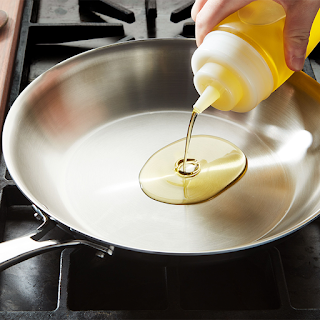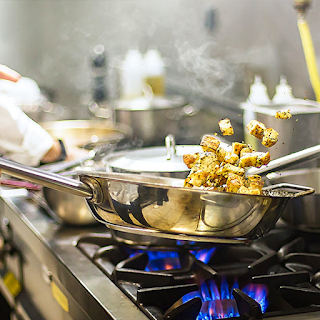Storing, handling and reuse
Not all cooking
oils can be used interchangeably. Each option has a variable shelf life,
nutritional value and is best used at different temperatures. While they are
very similar, their intricate differences can lead to an unintended culinary
error. Oil is a widely used ingredient in the kitchen, especially for frying
food. If you are used to frying, you will know that different oils leave a
different taste and smell when frying, not to mention the effects on our
health.
Regardless of
the oil used, it is worth remembering that over frying is harmful to our
health. To escape some of the harmful effects of frying, avoid very high
temperatures, use a moderate amount of oil as the recipe demands and try to
eliminate excess oil from the food after frying, using a paper towel, for
example. Refrain from using oil that has already been heated multiple times. Use
in moderate amounts so as not to compromise your health. In our day-to-day
cooking, regardless of the oil used, careful considerations are to be followed
as to not let the oil get too hot beyond its smoking point.
Reuse of cooking
oil? The current prevalent advice is not to reheat what has already been used.
Factors such as the type and quality of oil and the properties of the food that
goes into the pan influence the reactions during frying. They reduce the
lifetime of the oil and affect the final preparation quality. The smoke or
burning point is the temperature at which the oil begins to burn, oxidize and
decompose. When it reaches that point, it starts to release continuous smoke
and the food starts to have a smokier flavor due to a substance released in the
process, acrolein, carcinogenic in nature.
According to
professionals, cooking oil should not always be reused, precisely because its
reuse increases the formation of acrolein. So, in order to reuse the oil and
prolong its quality, it is important to keep an eye on the temperature, which
will ensure that your oil lasts longer. Although the degradation is greater if
the oil is reused, the following procedures help to prevent the oil from
releasing toxic substances:
·
Covering the cooking
utensil during frying breaks to prevent the oil from coming into contact with
the air.
·
Do not mix new oil with
used oil.
·
Filter the used oil at
the end of each frying session as soon as it cools down to remove food residues.
·
And to find out when
the oil has lost its quality and should no longer be reused, pay closer attention
to its color, taste and smell.
These steps retain
the oil's potency and decreases the transfer of flavors and smells from one
food to another. Please do take note that when the oil goes beyond the smoke
point, it loses its quality and releases toxic substances. As for storing, most
edible oils should be stored in a cool environment. Avoid sunlight as light can
quickly degrade an oil and store them in your kitchen cabinets that have little
or no light.



Comments
Post a Comment